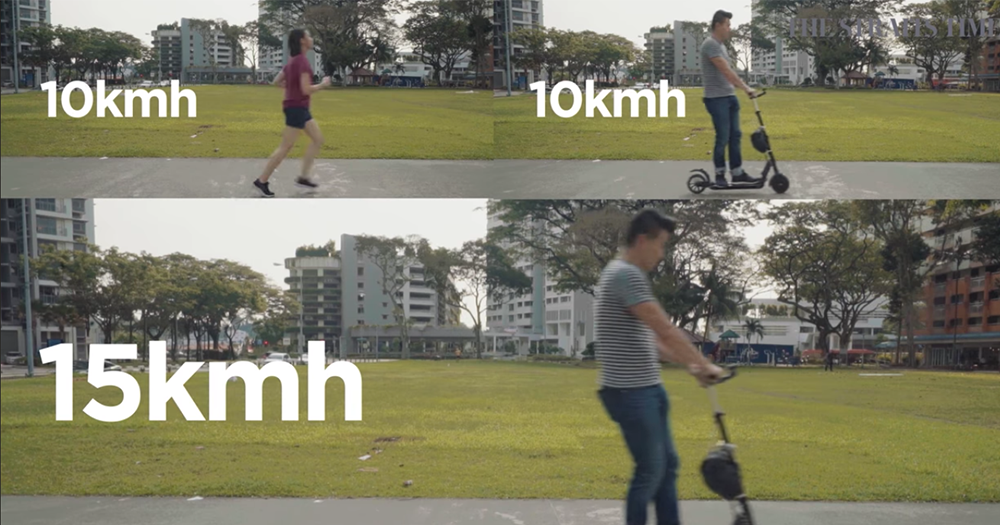The Singapore government has confirmed that it has accepted all recommendations proposed by the Active Mobility Advisory Panel in August 2018.
Amongst the recommendations accepted was the biggest point of contention of almost all time: The recommendation to lower the speed limit of Personal Mobility Devices (PMD) on footpaths from 15kmh to 10kmh.
If you're not an e-scooter user, the 5kmh difference might not be much to you, but it may mean a world of difference for an e-scooter rider.
[related_story]
Speed differences
In a video uploaded on Saturday, Sept. 8, The Straits Times reporters Basil Edward Teo and Rachel Quek set out to investigate the differences between the old speed limit of 15kmh and the new speed limit of 10kmh.
The video begins by showing the average walking speed, which is 5kmh.
It proceeds to show the average running speed of about 10kmh, and footage of Teo riding the e-scooter equivalent to that speed, before the footage cuts to Teo riding at 15kmh.
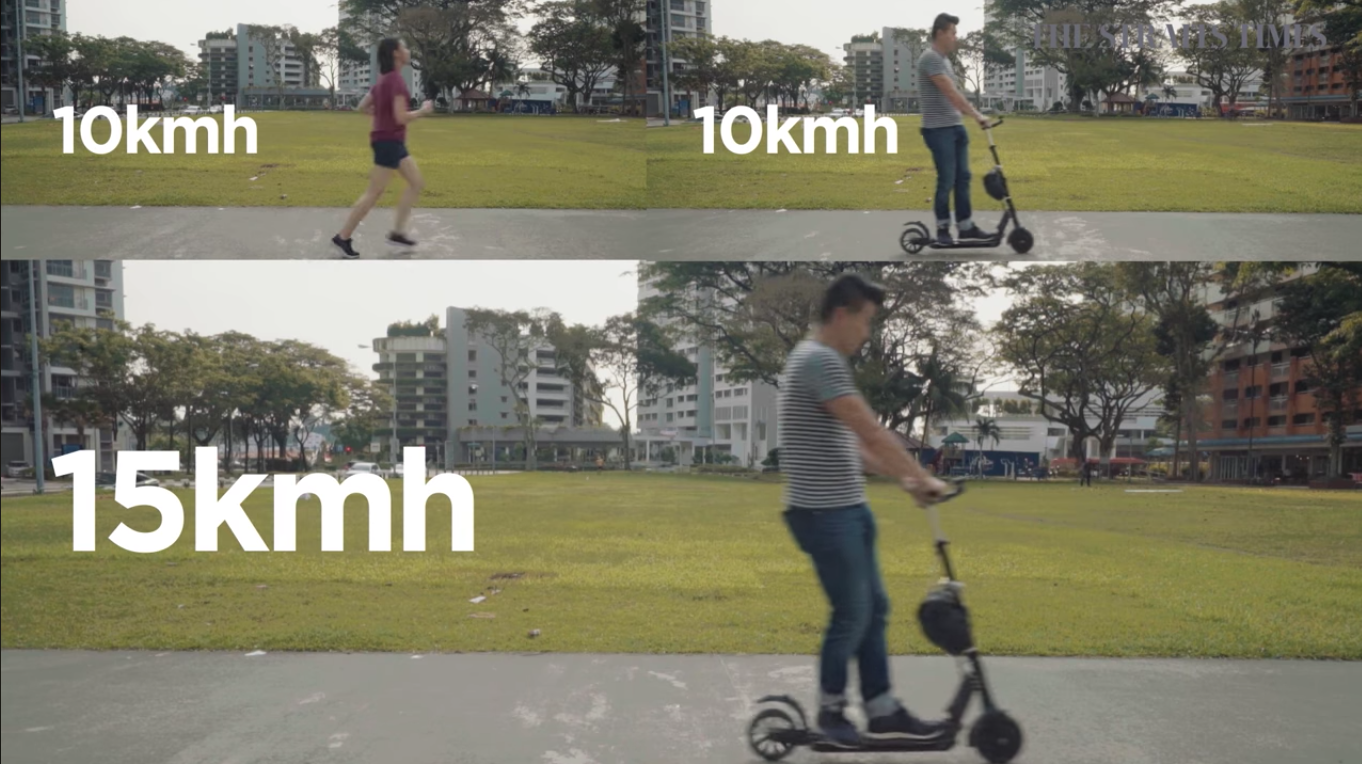 Screenshot via The Straits Times' Facebook post
Screenshot via The Straits Times' Facebook post
Brake tests
Teo then runs through a brake reaction test, where he is to brake his e-scooter at the demarcated point of the footpath, which is marked by tape.
The results of their test show that Teo was able to come to a complete stop at 77.5cm when he braked at 10kmh, but he was only able to do the same at 100.5cm when he braked at 15kmh, which is about 23cm more.
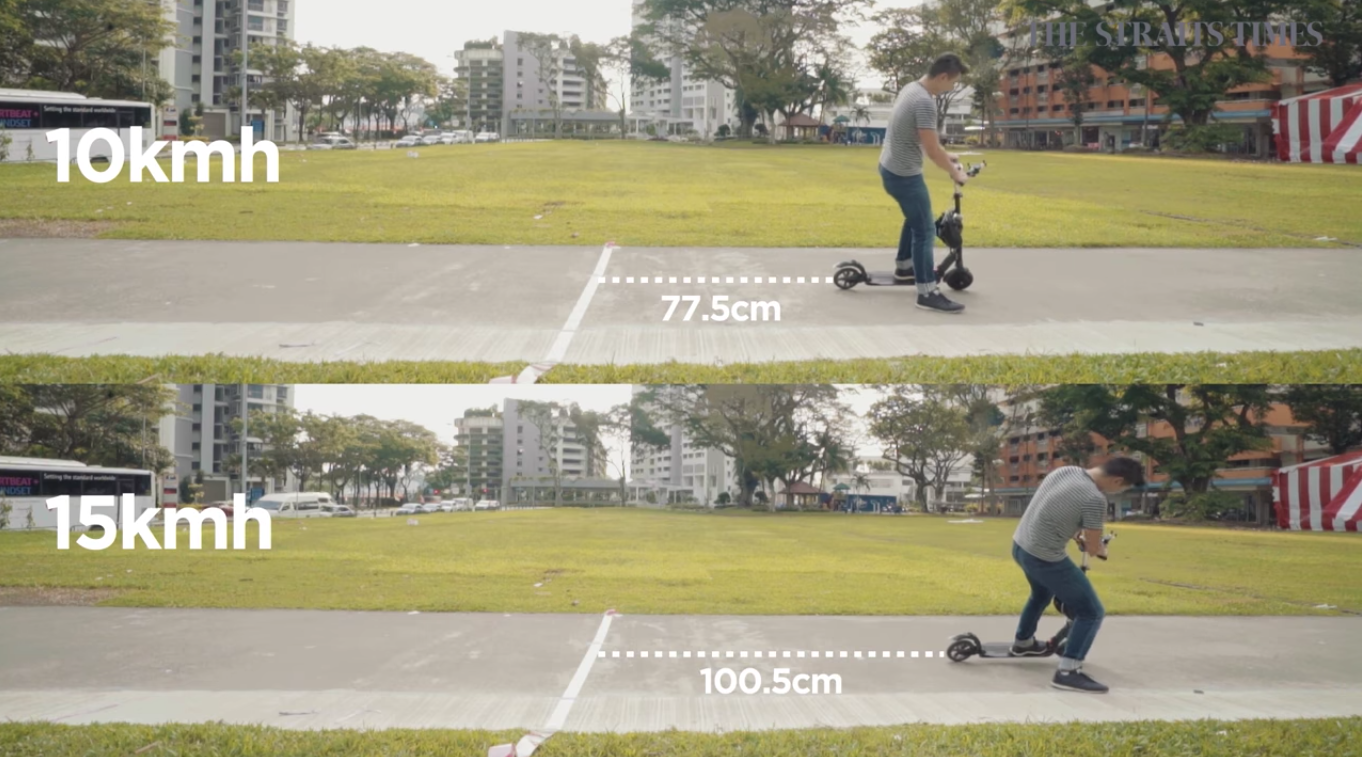 Screenshot via The Straits Times' Facebook post
Screenshot via The Straits Times' Facebook post
They also did a test to see how effectively the e-scooter could stop in front of a pedestrian (in this case, Quek) on the same path.
The results were that at 10kmh, Quek felt that she had time to react, but at 15kmh she felt she didn't have time, and Teo's speed gave her a shock as they nearly collided into each other.
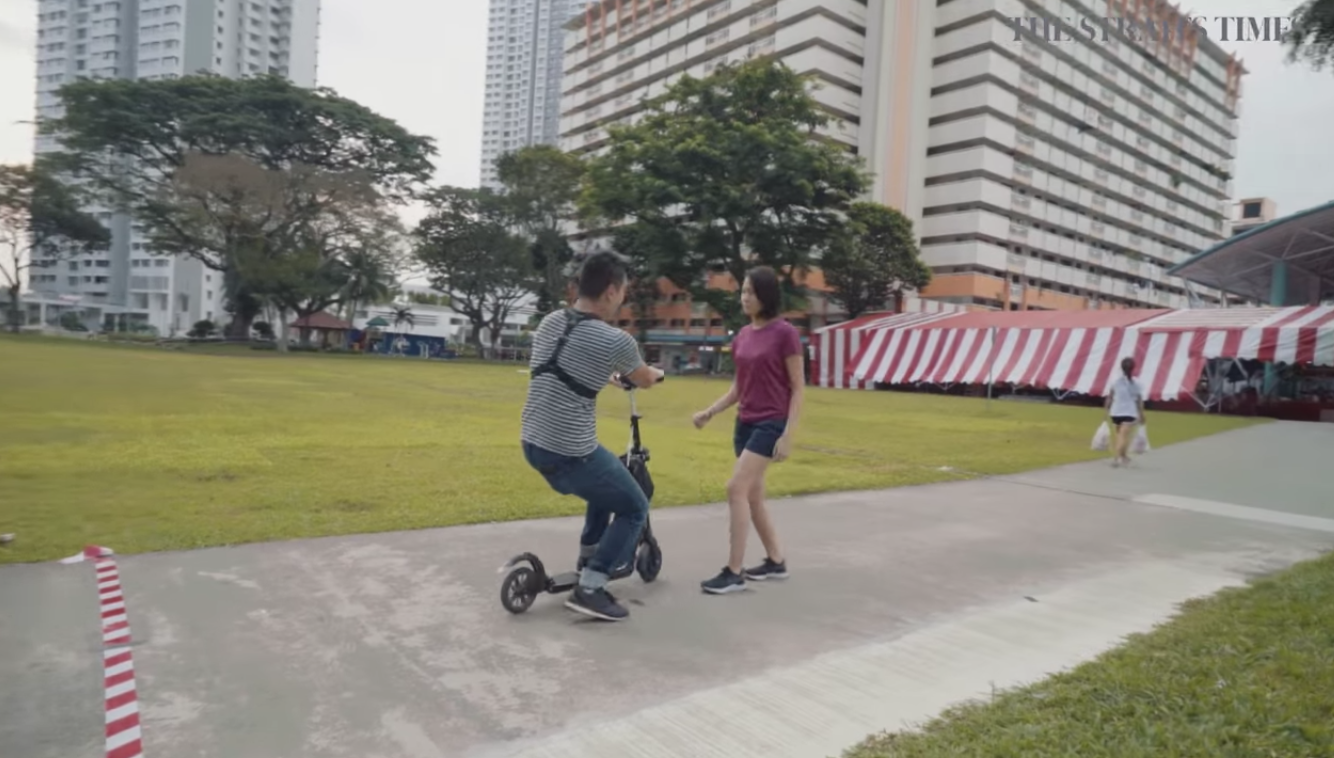 Screenshot via The Straits Times' Facebook post
Screenshot via The Straits Times' Facebook post
The video ends with Teo reiterating about staying safe and being aware of one's surroundings and looking out for the people around you.
Sounds good, doesn't work?
There were a lot of comments from Singaporeans who didn't agree with the 10kmh speed limit.
This was not so much because they disagreed with the need for safety, but they all had a differing opinion as to what might work better to curb the menace of dangerous PMD riding.
Some felt that the speed was way too slow even with consideration for the safety of others, since the speed limit is pretty much similar to that of joggers:
 Screenshot via The Straits Times' Facebook post
Screenshot via The Straits Times' Facebook post
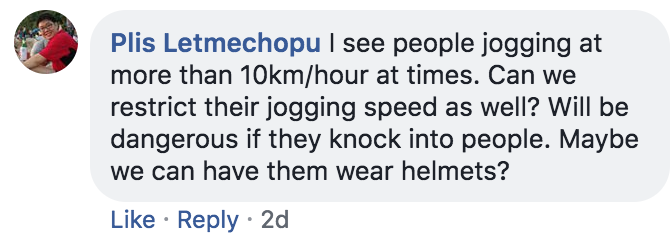 Screenshot via The Straits Times' Facebook post
Screenshot via The Straits Times' Facebook post
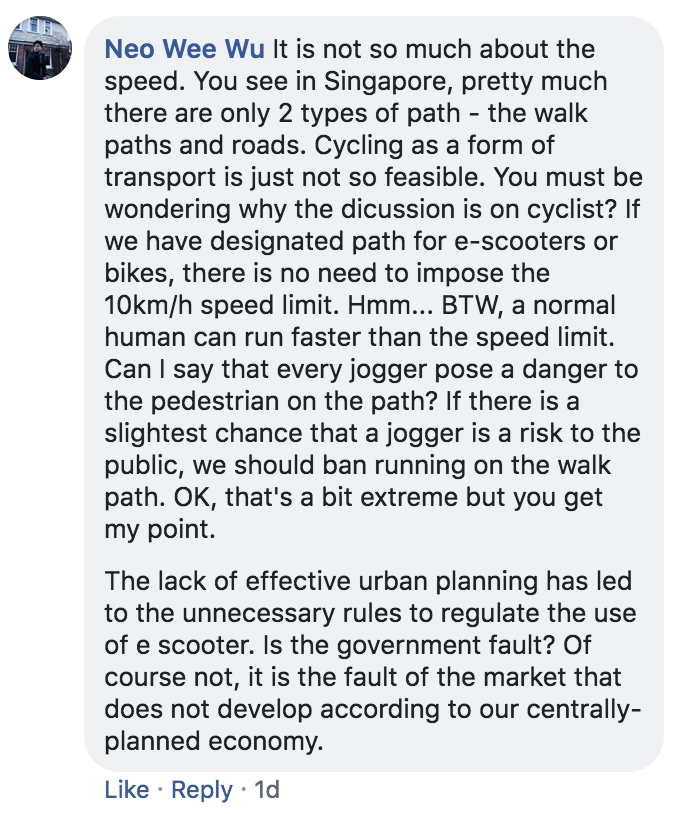 Screenshot via The Straits Times' Facebook post
Screenshot via The Straits Times' Facebook post
Others brought up the issue of dangerous pedestrians being the main issue:
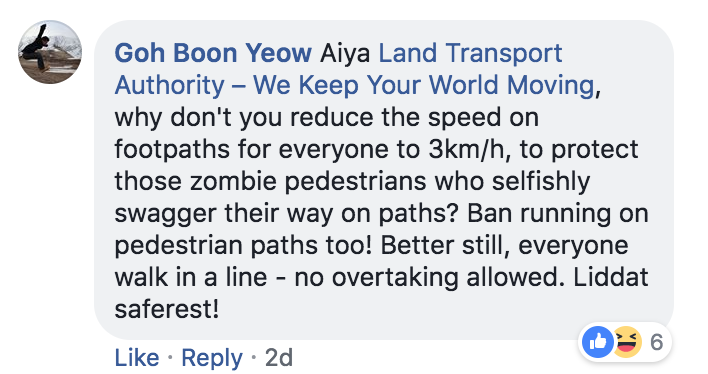 Screenshot via The Straits Times' Facebook post
Screenshot via The Straits Times' Facebook post
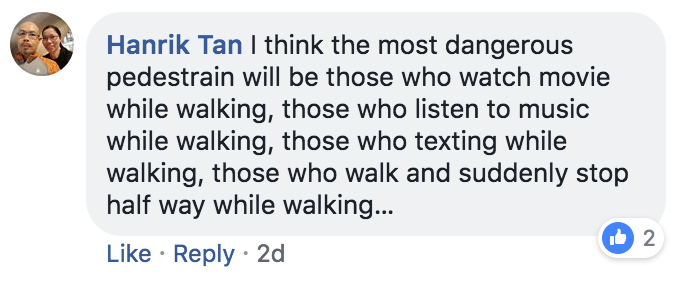 Screenshot via The Straits Times' Facebook post
Screenshot via The Straits Times' Facebook post
Some also pointed out that the 10kmh speed limit, while it makes a difference, doesn't quite make sense when considering stretches of roads without blindspots or obstacles.
 Screenshot via The Straits Times' Facebook post
Screenshot via The Straits Times' Facebook post
Users also chimed in that technical issues do arise in the implementation of the law.
 Screenshot via The Straits Times' Facebook post
Screenshot via The Straits Times' Facebook post
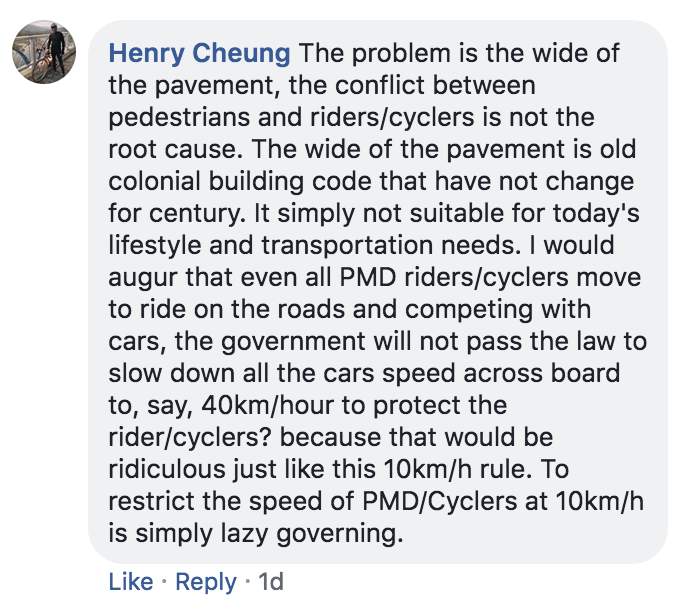 Screenshot via The Straits Times' Facebook post
Screenshot via The Straits Times' Facebook post
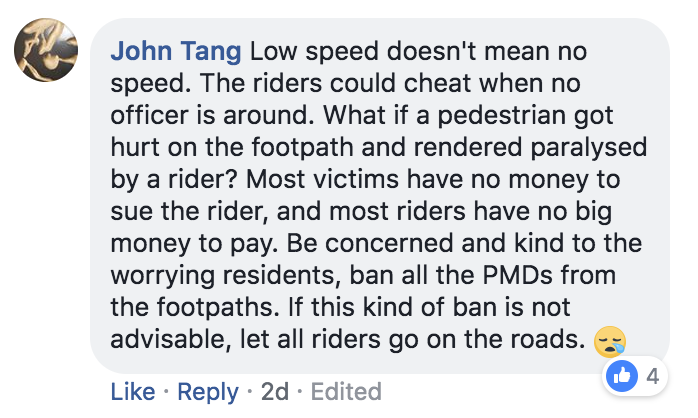 Screenshot via The Straits Times' Facebook post
Screenshot via The Straits Times' Facebook post
The rest would just prefer a complete ban on PMDs rather than just a speed limit.
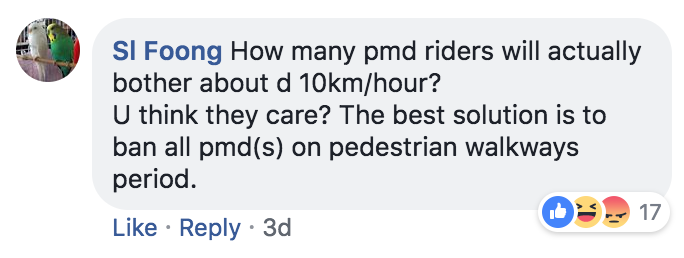 Screenshot via The Straits Times' Facebook post
Screenshot via The Straits Times' Facebook post
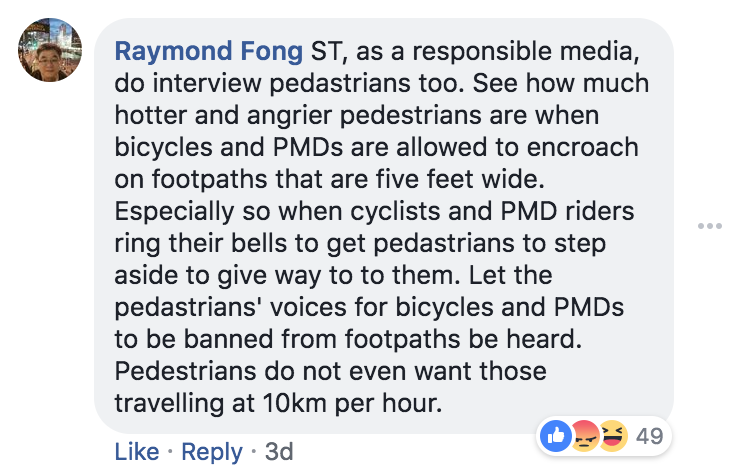 Screenshot via The Straits Times' Facebook post
Screenshot via The Straits Times' Facebook post
One particularly wise response suggested that both PMD and pedestrians seem to lack understanding and empathy for each other.
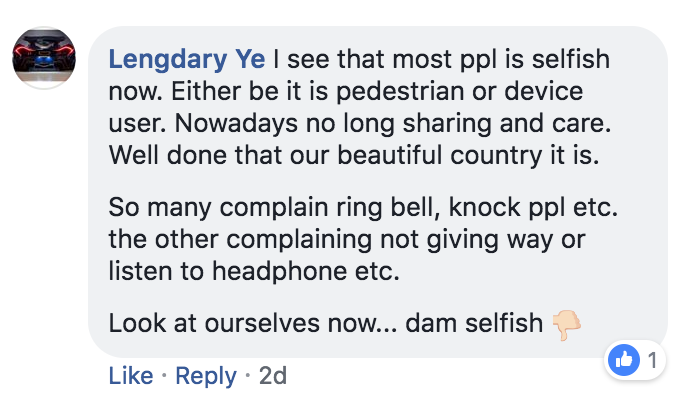 Screenshot via The Straits Times' Facebook post
Screenshot via The Straits Times' Facebook post
But perhaps the most important question is this.
 Screenshot via The Straits Times' Facebook post
Screenshot via The Straits Times' Facebook post
Because you know, you get faster when you're streamlined and all.
Top image via The Straits Times Facebook post
If you like what you read, follow us on Facebook, Instagram, Twitter and Telegram to get the latest updates.
